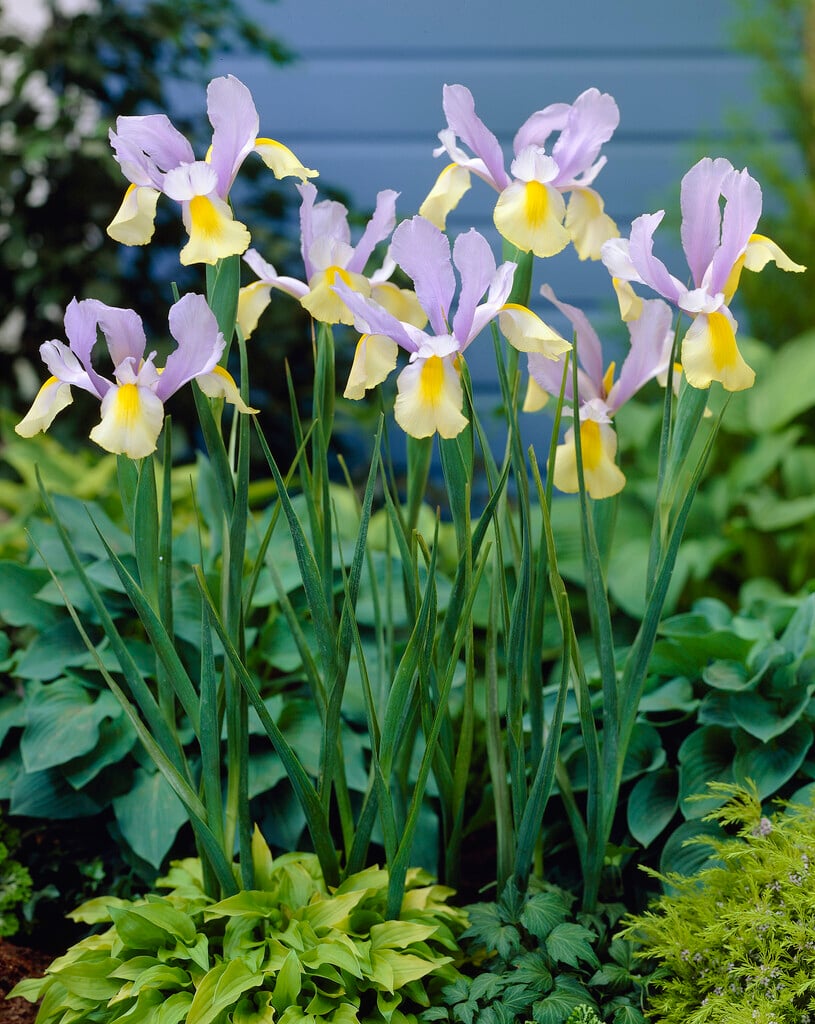Iris 'Oriental Beauty' (Dut)
iris 'Oriental Beauty'
A bulbous perennial, to around 60cm high, with narrow, upright green leaves. Flowers have very pale violet-blue standards, and pale yellow falls with a golden yellow centre spot. Flowers from late spring to early summer

Size
Ultimate height
0.5–1 metresTime to ultimate height
2–5 yearsUltimate spread
0.1–0.5 metresGrowing conditions
Moisture
Moist but well–drained, Well–drainedpH
Acid, Alkaline, NeutralColour & scent
| Stem | Flower | Foliage | Fruit | |
| Spring | Purple Yellow | Green | ||
|---|---|---|---|---|
| Summer | Purple Yellow | Green | ||
| Autumn | ||||
| Winter |
Position
- Full sun
Aspect
South–facing
Exposure
Sheltered Hardiness
H7Botanical details
- Family
- Iridaceae
- Native to GB / Ireland
- No
- Foliage
- Deciduous
- Habit
- Clump forming
- Potentially harmful
- Harmful if eaten. Wear gloves and other protective equipment when handling. Pets: Harmful if eaten. For further information and contact numbers regarding pets, see the HTA guide to potentially harmful plants
- Genus
Iris may be rhizomatous or bulbous perennials, with narrow leaves and erect stems bearing flowers with 3 large spreading or pendent fall petals, alternating with 3 erect, often smaller, standard petals, in late winter, spring or early summer
- Name status
Accepted
- Horticultural Group
- Dutch Iris are herbaceous bulbous perennials with narrow, channelled leaves and blue yellow or white flowers in late spring and early summer
How to grow
Cultivation
Thrives in a sunny position, in most soils with good drainage. In drier soils, dig in well-rotted organic matter before planting, and mulch in spring. Feed after flowering to encourage bulb growth. See bulb iris cultivation
Propagation
Propagate by division, separating bulb offsets from midsummer to early autumn
Suggested planting locations and garden types
- City and courtyard gardens
- Cottage and informal garden
- Flower borders and beds
- Wall side borders
Pruning
Remove spent flower stems in summer, and any dying foliage in autumn
Pests
Diseases
May be susceptible to leaf spots, ink disease, rust diseases, bulb rot and viruses; see Iris diseases for more details
Get involved
The Royal Horticultural Society is the UK’s leading gardening charity. We aim to enrich everyone’s life through plants, and make the UK a greener and more beautiful place.